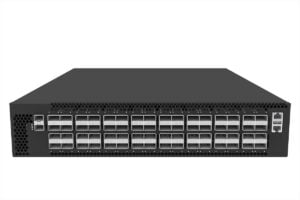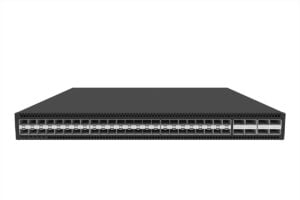Next Generation Data Center Network, Centralized Gateway or Distributed Gateway?
written by Asterfuison
Table of Contents
The conversation surrounding the new design of data center networks is gaining momentum as software-defined networks (SDN) and open networks become more prevalent. The big question being pondered by networking professionals: where is the optimal location to implement the new data center network gateway? Centralized gateway or distributed gateways?
What is centralized gateway?How does it deployed?
A centralized gateway is a network design where a single device or node is responsible for handling traffic for multiple endpoints or devices.The deployment of the centralized gateway in the data center is usually placed at the core of the network, such as the aggregation layer or core layer of the data center. It is usually an independent hardware device or software virtual machine connected to various devices in the network by using high-speed connections such as fiber optics. In the data center, the centralized gateway mainly plays the role of connecting all network devices to the external network, providing network security, load balancing and traffic monitoring and other functions.
However, with the rise of cloud computing and virtualization, data centers are dealing with more complex and dynamic network environments that require more agility and flexibility in terms of network design and management.
The disadvantages of using a centralized gateway in a data center can include:
- Lack of flexibility: Centralized gateways may be less flexible and adaptable to changes in the network compared to distributed gateways, which can be more easily scaled up or down depending on demand.
- Single point of failure: Because all traffic flows through the gateway, it can create a single point of failure. If the gateway fails, it can disrupt all network traffic, potentially leading to downtime and loss of productivity.
- Traffic bottlenecks: As all network traffic flows through the gateway, it can create bottlenecks in the network, potentially slowing down network performance.
- Higher costs: Centralized gateways may require specialized hardware or software, which can be more expensive compared to software-based distributed gateways.
Distributed gateways, In recent years, more popular, which can be deployed as software-based solutions, are better suited for these modern data center environments as they can be more easily scaled up or down depending on demand.
What is distributed gateways?How does it deployed?
A distributed gateway is a network design where the gateway functionality is distributed across multiple devices or nodes in a network, (usually at the access layer or edge layer of the data center) rather than relying on a single centralized device. This can help to reduce latency and improve performance for applications and services that are being accessed from multiple locations.
Distributed gateways can provide several benefits in a data center network, including:
- Resiliency: With a distributed gateway, traffic can be rerouted if one node fails, which can improve overall network resiliency.
- Scalability: A distributed gateway can scale more easily than a centralized gateway, since traffic processing and forwarding can be distributed across multiple devices.
- Reduced bottlenecks: With a distributed gateway, traffic can be processed and forwarded by multiple devices at the same time, reducing the likelihood of bottlenecks and improving overall network performance.
- Improved geographic optimization: In a distributed gateway setup, traffic can be better optimized between different geographic locations, which can help reduce latency and improve overall network performance.
- Better fault tolerance: A distributed gateway can reduce the effect of individual device failures, since other nodes can pick up their work in the network.
Overall, a distributed gateway can provide greater redundancy, resiliency, and scalability compared to a centralized gateway, while also improving overall network performance and optimizing traffic flow between different locations.
The key contrasts between centralized and distributed gateways:
- Resiliency: A distributed gateway design provides greater redundancy and resiliency compared to a centralized gateway design. In a distributed design, traffic can be automatically rerouted if one node fails, reducing the risk of downtime and maintaining network performance.
- Performance: A distributed gateway can provide better scalability and performance by enabling traffic processing and forwarding to be distributed across multiple devices simultaneously.
- Complexity: A distributed gateway design can be more complex and may require special protocols and technologies to coordinate the traffic flow across the nodes, compared to a centralized design, which can be simpler to manage.
- Geographical dispersion: A distributed gateway may be more suitable for environments with geographically dispersed endpoints, as it can better handle and optimize traffic flows between different locations.
Currently, there has been an increasing trend of utilizing distributed gateways over the past few years, particularly with the increasing use of overlay architectures like EVPN VXLAN. In adition,distributed gateways are better equipped to handle network isolation and management. This is ideal in multi-tenancy, virtualization, and cloud computing contexts, ultimately enhancing network flexibility and reliability. Furthermore, distributed gateways can leverage software-defined networking (SDN) technology to implement functions such as dynamic service links, traffic scheduling, and load balancing amongst others.But, distributed gateways also have some challenges, such as deployment complexity and network security issues that need to be fully considered.
However, some more traditional data centers still utilize a centralized gateway as their network architecture design, similar to the traditional three-tier architecture. The centralized gateway design has its own benefits, including ease of deployment, ability to manage large amounts of traffic, and simplicity of maintenance.
Therefore, it’s difficult to give a definitive answer on whether more centralized or more distributed gateways are used in data centers now, as each organization’s approach may vary based on their specific needs and goals. It’s best to consider both centralized and distributed gateway options to determine which architecture best suits a particular organization’s network and workload requirements.
Related Products
-
 64-Port 200G QSFP56 Low Latency Data Center Switch, Enterprise SONiC Ready, Marvell Teralynx: CX664D-N
64-Port 200G QSFP56 Low Latency Data Center Switch, Enterprise SONiC Ready, Marvell Teralynx: CX664D-N -
 64-Port 100G QSFP28 Data Center Switch, Enterprise SONiC Ready,Low Latency: CX564P-N
64-Port 100G QSFP28 Data Center Switch, Enterprise SONiC Ready,Low Latency: CX564P-N -
 48-Port 25G Data Center Leaf (TOR) Switch with 8x100G Uplinks, SONiC Enterprise Ready, Marvell Falcon: CX308P-48Y-N
48-Port 25G Data Center Leaf (TOR) Switch with 8x100G Uplinks, SONiC Enterprise Ready, Marvell Falcon: CX308P-48Y-N



